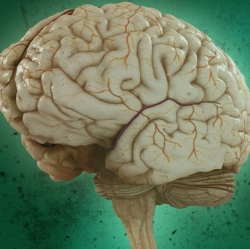
Understanding of brain disorders such as Alzheimer’s disease is constantly evolving, but when observing how such conditions affect synapses, researchers have had to rely on post-mortems. Scientists have developed a technique that could revolutionize how we observe the progress of common brain disorders.
In the long run, it could lend a hand in the development of treatments for everything from Alzheimer’s to epilepsy. Synapses are the junctions between the brain’s nerve cells; they’re essential to how the brain works, allowing signals to pass from one neuron to another. Certain conditions cause damage to synapses, which stops the brain from functioning in a normal, healthy manner.
The new method makes use of a positron emission tomography (PET) scanner, combined with a radioactive tracer, which is a chemical compound with an atom swapped out for a radioactive isotope, which can then be detected by sensitive equipment. The tracer is injected into the body, and binds with a particular protein present in synapses in the brain.
The PET scanner is then used to observe the radioactive emissions from the tracer, with a custom-made mathematical tool interpreting the data to describe synaptic density, or the number of synapses firing in any one area. That information describes how healthy the brain is, with decreased density indicating that a condition is interrupting or inhibiting normal function. Up until now, we’ve only been able to study synaptic density through autopsies.
The researchers have already tested out the imaging technique, applying it to both baboons and human patients. The trials confirmed that the method works as intended, revealing synaptic loss in three patients with epilepsy. They are currently planning future studies on conditions including schizophrenia, depression, Alzheimer’s and Parkinson’s disease.
Scientists have already developed methods for observing neuron behavior on a brain-wide scale and even built a window to the brain, but with current methods of synapse study being limited to autopsy observations, a new imaging technique for synapses could have a big impact on our understanding of neurological disorders, and might even help us develop new treatments.
"This opens the door to follow the natural evolution of synaptic density with normal aging and follow how drugs can alter synapses or synapse formation." said study co-author Rich Carson.
